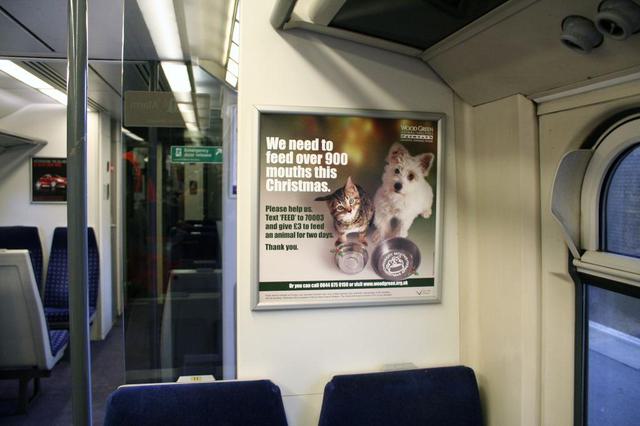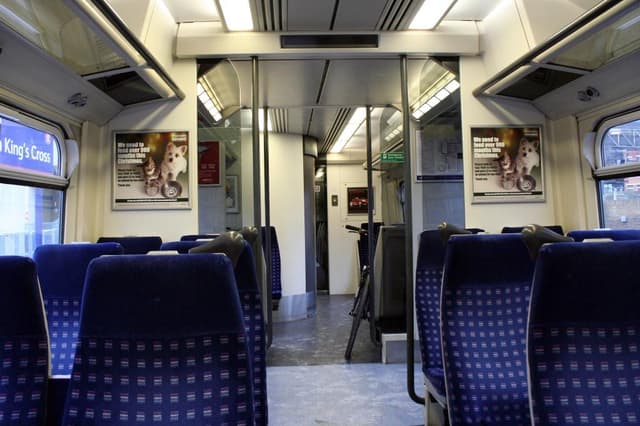Wood Green Animal Shelters: hungry mouths SMS Christmas campaign
- Exhibited by
- Rosie Blanning, donor development officer, Wood Green Animal Shelters.
- Added
- May 20, 2011
- Medium of Communication
- Telephone
- Target Audience
- Type of Charity
- Country of Origin
- UK
- Date of first appearance
- November, 2010
SOFII’s view
This exhibit shows how smaller charities don’t need to get left behind when it comes to trying new fundraising methods. The fundraising team at Wood Green Animal Shelters decided to be brave and try something new in their Christmas campaign – and it paid off. Their successful SMS campaign resulted in new donors and new gifts.
Summary / objectives
The objectives of this campaign were:
- To test a method of fundraising that the charity had never tried before.
- To get information about new supporters and then call them to ask if they would convert to regular giving.
- To reinforce the images of the hungry mouths Christmas appeal through the ‘see it, see it and see it again’ method.
Background
Wood Green Animal Shelters was founded in 1924 and aims to take in any unwanted and lost animals and helps to find them a secure and loving home. Shelters are in Cambridgeshire, Hertfordshire and the original site in north London.
The fundraising team at Wood Green wanted to test SMS as a method of fundraising after seeing a number of other charities use it as part of an integrated campaign with a mixture of results. It seemed like a good idea to do this within the safety of our integrated Christmas appeal.
To enable us to raise money through SMS, we set up two keywords (HUNGRY and FEED) and a short code that were implemented by Adestra Ltd. These words were chosen to reinforce and represent the hungry m
ouths Christmas appeal.
We decided to test our SMS fundraising in two different ways. Posters were displayed at all three of our shelters and the text-to-donate banner was also included on each animal’s kennel card. The short code for the shelters was HUNGRY.
We also decided we wanted to test SMS fundraising on a captive audience and decided to test the appeal posters by advertising them on trains running between Peterborough and London King’s Cross stations. This is a very busy commuter line so we hoped to gain a lot of interest.
The posters were displayed on trains for four weeks over the campaign period and asked people to donate three pounds by SMS to feed an animal for two days. The short code for the trains was FEED.
By advertising the SMS campaign in two different ways, we were able to not only test the fundraising method but also which was the most responsive audience.
After a text had been sent, the donor’s mobile number was then forwarded to a company called Ethicall which stored the data.
Special characteristics
We felt that SMS would be the most appropriate response mechanism for train travellers as the donors don’t have to take part in an immediate phone call whilst armed with their credit card details to give to the call agent. The down side is, of course, that the only data the charity receives is the donors’ telephone numbers.
To resolve this, we called donors a few days after their initial donation. We were able to tell them more about the charity and encourage them to sign up to give a monthly gift.
Influence / impact
Over three months we received 652 text donations; an impressive 276 donations were received over the first 11 days of the train poster campaign; 19 per cent of the contacts made agreed to sign up to a monthly gift with an average gift of £73.45 per annum. This was the highest conversion percentage compared to other channels used in the campaign. The average annual gift for SMS supporters was 49 per cent higher than those of other media; 75 per cent of the new committed givers agreed to Gift Aid their donations. Our projected income after 24 months is £11,835.38, which will give us an ROI of 1.49.
Eight-eight per cent of the initial SMS donations were generated from the posters on the trains. We were very pleased with this result and will be looking to roll out a similar campaign in the future, with the possibility of looking to advertise further afield in the hope of generating more donations and capturing a wider audience.
Merits
We had great results from this campaign and think that it was a good new way for a charity to recruit supporters from a slightly different demographic grouping. This campaign has also been shortlisted for an Institute of Fundraising National Award (2011).
 View original image
View original image
























